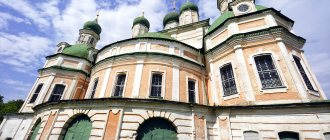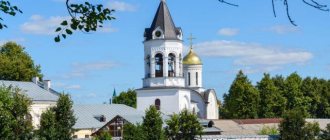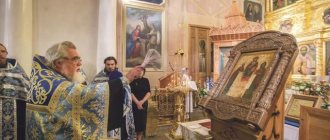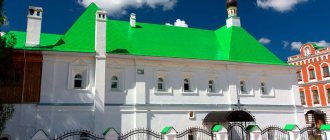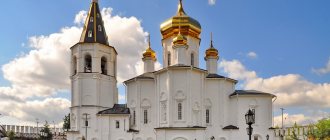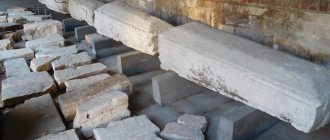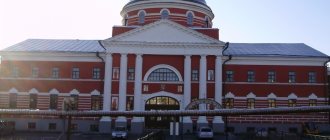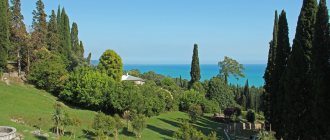Mir
Russia Yaroslavl region Nikitskaya Sloboda village Nikitsky Monastery (Pereslavl-Zalessky) Map is loading…
{"format":"leaflet","minzoom":false,"maxzoom":false,"limit":50,"offset":0,"link":"all","sort":[""], "order":[],"headers":"show","mainlabel":"","intro":"","outro":"","searchlabel":"\u2026 \u0441\u043b\u0435\ u0434\u0443\u044e\u0449\u0438\u0435 \u0440\u0435\u0437\u0443\u043b\u044c\u0442\u0430\u0442\u044b","default":"","import-annotation":false,"width ":"auto","height":"350px","centre":{"text":"","title":"""link":"""lat":56.7609580000000022437234292738139629364013671875,"lon": 38.860084999999997990016709081828594207763671875,"icon":""},"title":"","label":"","icon":"","lines":[],"polygons":[],"circles":[ ],"rectangles":[],"copycoords":false,"static":false,"zoom":8,"defzoom":14,"layers":["OpenStreetMap"],"image layers":[] ,"overlays":[],"resizable":false,"fullscreen":true,"scrollwheelzoom":true,"cluster":false,"clustermaxzoom":9,"clusterzoomonclick":true,"clustermaxradius":80, "clusterspiderfy":true,"geojson":"","clicktarget":"","showtitle":true,"hidenamespace":false,"template":"","userparam":"","activeicon": "","pagelabel":false,"ajaxcoordproperty":"","ajaxquery":"","locations":[{"text":"\u003Cb\u003E\u003Ca href=\"/palomnik/%D0% 9D%D0%B8%D0%BA%D0%B8%D1%82%D1%81%D0%BA%D0%B8%D0%B9_%D0%BC%D1%83%D0%B6%D1%81% D0%BA%D0%BE%D0%B9_%D0%BC%D0%BE%D0%BD%D0%B0%D1%81%D1%82%D1%8B%D1%80%D1%8C_(%D0 %9F%D0%B5%D1%80%D0%B5%D1%81%D0%BB%D0%B0%D0%B2%D0%BB%D1%8C-%D0%97%D0%B0%D0% BB%D0%B5%D1%81%D1%81%D0%BA%D0%B8%D0%B9)\» title=\»\u041d\u0438\u043a\u0438\u0442\u0441\u043a\u0438\u0439 \u043c\u0443\u0436\u0441\u043a\u043e\u0439 \u043c\u043e\u043d\u0430\u0441\u0442\u044b\u0440\u044c (\u041f\u0435\u0440\u0435\ u0441\u043b\u0430\u0432\ u043b\u044c-\u0417\u0430\u043b\u0435\u0441\u0441\u043a\u0438\u0439)\»\u003E\u041d\u0438\u043a\u0438\u0442\u0441\u043a\u0438\ u0439\u043c\u0443\ u0436\u0441\u043a\u043e\u0439 \u043c\u043e\u043d\u0430\u0441\u0442\u044b\u0440\u044c (\u041f\u0435\u0440\u0435\u0441\u043b\u0 430\u0432\u043b\u044c-\ u0417\u0430\u043b\u0435\u0441\u0441\u043a\u0438\u0439)\u003C/a\u003E\u003C/b\u003E","title":"\u041d\u0438\u043a\u0438\u0442\u0441 \ u043a\u0438\u0439 \u043c\u0443\u0436\u0441\u043a\u043e\u0439 \u043c\u043e\u043d\u0430\u0441\u0442\u044b\u0440\u044c (\u041f\u 0435\u0440\u0435\u0441\u043b \u0430\u0432\u043b\u044c-\u0417\u0430\u043b\u0435\u0441\u0441\u043a\u0438\u0439)","link":"""lat":56.76095800000000224372342927381 39629364013671875,"lon":38.860084999999997990016709081828594207763671875," icon":""}],"imageLayers":[]}
56.759918; 38.860293
Russia, Yaroslavl region, Pereslavl-Zalessky urban district, Nikitskaya Sloboda village, Zaprudnaya street
Nikitskaya Sloboda village, Yaroslavl region
Russia
Telephone.:
8 (48535) 3-20-08, 8 (48535) 3-17-65
Nikitsky Monastery
- a monastery located on the northern outskirts of the city of Pereslavl-Zalessky, next to the Pleshcheyevo Lake national park. One of the oldest monasteries in Russia. Dedicated to Saint Nikita the Great Martyr. The main holidays of the monastery are May 24/June 6 - the memory of St. Nikita; May 23/June 5 – Cathedral of the Rostov-Yaroslavl Saints.
According to the legend of the Degree Book, Prince Vladimir Svyatoslavich gave the Rostov-Suzdal region to his son Boris. The current inhabitants consider the year 1010 to be the date of the founding of the holy monastery. It was at this time that Boris and Bishop Hilarion founded the first churches on Lake Pleshcheyevo, thus establishing Christianity in pagan lands. It is possible that one of these churches became the basis of the future monastery.
History[edit]
The monastery is not mentioned in the literary monuments of the pre-Mongol era. The time when the monk Nikita Stolpnik lived in it also raises doubts. For example, E.E. Golubinsky attributed his activities to the period of the Tatar-Mongol yoke.
Around the 15th century, one of the monks of the Nikitsky monastery compiled the life of St. Nikita, which was then supplemented by a description of the miracles shown to the saint posthumously. From the life it follows that the Venerable Stylite Nikita of Pereslavl asceticised here at the end of the 12th century. Among the people who received healing thanks to the saint, Mikhail Vsevolodovich, the son of the Chernigov prince, and John, the son of Ivan Vasilyevich the Terrible, are mentioned in his life. In memory of the healing of Michael, the Chernigov Chapel was erected (the current building dates back to 1702).
Old Russian period[edit]
At the turn of the 15th-16th centuries, the future founder of the Pereslavl Trinity-Danilov Monastery, St. Daniel.
Until the 16th century, the monastery lived on its own labors. Around 1515-1521, the Pereslavl deacon Eustathius, after his healing, erected a wooden Nikitsky Church at the relics of the saint, dedicated to the Pereslavl miracle worker (not preserved). In 1521, the Uglich prince Dmitry Ioannovich donated a village near Uglich to the monastery. And in 1528, by order of the Grand Duke of Moscow Vasily the Third, a stone Nikitsky Cathedral was built on the territory of the monastery on the site of the old stone Nikitsky Church (dedicated to the early Christian martyr).
The heyday of the monastery began under Abbot Vassian, when the son of Vasily the Third, Ivan the Terrible, turned his attention to it. He prepared the monastery as a reserve oprichnina fortress - in case the Alexandrovskaya Sloboda ceased to be a reliable fortification. More than once he and his family made pilgrimages to the monastery. In 1560-1564, by order of the tsar, a new cathedral building was erected - a five-domed temple (the old building from the time of Vasily the Third became the southern chapel of Nikita the Stylite). Ivan the Terrible came to the consecration of the cathedral. One of his contributions was a massive bronze chandelier for the temple, and his wife Anastasia Romanovna donated to the temple a personally embroidered image of Nikita the Stylite. The 16th century temple has survived to this day. At the order of the tsar, other buildings were erected here - the refectory church (not preserved), the gate church of St. Archangel Gabriel (not preserved), walls and towers (1562, preserved in a rebuilt form). Ivan the Terrible provided the monastery with estates and established a common residence.
The walls of the monastery withstood the siege of the Poles in 1609. And in 1611, the Lithuanians and Pan Sapega burned the monastery after a two-week siege. Many of the monastery’s defenders were killed, and Abbot Misail, who led the defense, was forced to wander after the siege. Lithuanian cannons remained on the territory of the monastery (two have been preserved and are now exhibited in the Pereslavl Museum).
The monastery was restored with the participation of the royal Romanov family. Tsars Mikhail Fedorovich and Alexei Mikhailovich, Patriarch Filaret Nikitich made valuable gifts to the monastery. Under Alexei Mikhailovich in 1643-1645 (partly at the expense of Patriarch Joseph), the walls and towers were restored with minor changes. At the same time, the Church of the Annunciation, which has survived to this day, was erected with a two-story refectory and a tent-roofed bell tower. In 1668, Alexey Mikhailovich allowed fishermen for monastic use to catch all kinds of fish in the lake with one net. In February 1698, this permission was confirmed by Peter I, who, according to legend, lived in the monastery for some time.
In 1702, the Chernigov Chapel was built - the last example of Pereslavl architecture of the Old Russian period.
Period of the XVIII-XX centuries[edit]
Pilgrims in the monastery of the 18th-19th centuries were shown the pillar and ancient chains of St. Nikita, as well as his stone cap; the latter was confiscated by Moscow church authorities in 1735.
The monastery managed to survive Catherine’s time, which was disastrous for many monasteries. Construction continued here in the 18th-19th centuries.
In 1768, a chapel in the name of St. was added to the refectory of the Church of the Annunciation. Nicholas the Wonderworker. In the 18th century, a chapel was built over the pillar of St. Nikita and service buildings (all buildings have been preserved).
At the beginning of the 19th century, instead of the ancient (from the time of Ivan the Terrible) gate church of St. A high bell tower was built for the Archangel Michael.
Every year 6 processions of the cross took place in the monastery: 2 - from Pereslavl to the monastery (May 24/June 6 on the day of St. Nikita and July 21/August 3 in memory of the deliverance of Pereslavl residents from cholera in 1848; on Monday of Holy Week, February 2/15 and September 15/28 - around the monastery; on the ninth Sunday after Easter to the well of St. Nikita).
Monastery in the 20th century[edit]
In 1918, the property of the monastery was nationalized. Formally, the monastery was liquidated in 1923, and valuable items were transferred to the museum. At various times, on the territory and in the buildings of the monastery there was a rest house for scientists, a school, residential apartments, a city committee, and a women's colony. In 1933, the iconostasis of the Nikitsky Cathedral was burned.
In the 1960s and 1970s, the Nikitsky Cathedral, the oldest building of the monastery, was restored. However, in 1984, on Elijah’s Day, its central chapter collapsed. In December 1993, the monastery was reopened. Large-scale restoration of buildings and landscaping of the territory began, led by the abbot of the monastery (until 1999), Bishop Anatoly (Aksyonov). Since 1999, Father Dimitri (Alexey Mikhailovich Khramtsov) has been the archimandrite of the monastery.
Current state and mode of visiting the Nikitsky Monastery
Today there are 15 monks living in the monastery. You can enter the territory of the monastery any day from 7.00 to 20.00. Morning services are held at 7.30 and evening services at 16.00.
All services are performed in the Annunciation Church, since the Nikitsky Cathedral is still under restoration. For pilgrims there is a hotel with stove heating and outdoor amenities, designed for 50 beds. Anyone can take photos and videos on site for free. You can't film only monks and church services.
In the monastery refectory you can buy fresh kvass and baked goods. And near the monastery they sell delicious smoked fish, including vendace, from Lake Pleshcheevo.
About a kilometer from the monastery, in a small ravine, there is Nikita’s spring and covered fonts - separate for men and women. This is a place of constant pilgrimage for believers, as the local water is considered healing.
Nikitsky Monastery
How to get there[edit]
Directions:
Nikitsky Monastery is located on the outskirts of Pereslavl-Zalessky. From Moscow you can get to Pereslavl from the bus station (near the Shchelkovskaya metro station), then to the monastery by city bus. Buses also go to Pereslavl-Zalessky from Yaroslavl and Rostov. By car from Moscow, you need to follow the Yaroslavl highway to Pereslavl-Zalessky, then drive through the entire city (be careful, do not turn onto the ring road before entering Pereslavl) and turn left at the Nikitsky Monastery sign.
Address:
Yaroslavl region, Pereslavl-Zalessky, Nikitskaya Sloboda, st. Zaprudnaya, 20.
Tel.:
8 (48535) 3-20-08, 8 (48535) 3-17-65
Website:
https://nikitskiy.cerkov.ru/
Contact page:
https://vk.com/nikitmon
Abbots
- Jonah (early 16th century)
- Vassian (1558)
- Khariton (1561)
- Nikon (1579 - 1598)
- Pachomius (1602)
- Leonty (1608 - 1609)
- Misail (1611), on the occasion of the destruction of the monastery by the Lithuanians, wandered “between the courtyards”
- Ferapont (1614)
- Job (1617 - 1627), transferred to the Pskov-Pechersky Monastery
- Athanasius (1627- 1680)
- Joseph (1630 -1639)
- Moses (1642 - 49)
- Porfiry (1653)
- Moses (Venevitin) (1655 - 1657)
- Gerasim (1657 - 1662)
- Roman (1663 -1685)
- Theodosius (1686 - 1699)
- Avramy (1700 - 1702)
- Joseph (16 June 1702)
- Sergius (1703 - after September 18, 1704)
- Varlaam (Likharev) (November 8, 1704 - February 14, 1709) [1].
- Pachomius (30 August 1709 - June 1714)
- Joseph (Savvin) (July 18, 1714 - 1724)
- Anthony (September 1724 - 1727)
- Andrey (Perhurov) (March 24, 1729 - March 24, 1730)
- Hilarion (March 24, 1730 - June 1732)
- Jonah (February 1733 - 1736)
- Joseph (Skripitsyn) (August 11, 1736 - 1738)
- Avramy (February 1739 - 1744)
- Avramy (Galitsky) (January 6, 1745 - August 1745)
- Serapion (Lyatoshevich) (1745 - March 20, 1753)
- Pachomius (Simansky) (March 1753 - November 27, 1759)
- Nifont (Chervinsky) (November 25, 1753 - January 16, 1758)
- Callistratus (January 16, 1758 – December 9, 1759)
- Bogolep (January 4, 1760 - March 6, 1760), abbot of the St. Nicholas Monastery, acting abbot
- Sylvester (Stragorodsky) (March 6, 1760 - November 5, 1761)
- Galaktion (January 10, 1762 - October 10, 1762)
- Jerome (Lewandowski) (December 5, 1762 - November 25, 1774)
- Ioannikiy (January 2, 1775 - April 22, 1786)
- Nikander (April 22, 1786 - November 6, 1788)
- Pallady (Lukashevich) (November 6, 1788 - May 2, 1794)
- Afanasy (May 2, 1794 - June 13, 1799)
- Benjamin (June 13, 1799 - August 19, 1802)
- Anatoly (August 19, 1802 - June 8, 1804)
- Innokenty (Tikhomirov) (June 8, 1804 - September 16, 1804)
- Nikon (Boevsky) (November 16, 1804 - March 20, 1806)
- Lawrence (March 20, 1806 - December 24, 1830)
- Pachomius (1830 - 1832)
- Jerome (Sretensky) (July 10, 1833 - March 1845)
- Nifont (Uspensky) (April 1845 - 1868)
- Gerasim (Gryaznov) (July 10, 1868 - 1872)
- Naum (April 23, 1872 - mentioned 1891) [2], from the abbots of the Kosminsky monastery
- Vladimir (Dobronravov) (1891 - March 12, 1896)
- Isidor (Kolokolov) (March 12, 1896 - June 7, 1900) [3]
- Anatoly (Junger) (December 8, 1900 - January 16, 1904)
- Vladimir (March 2, 1904 - August 31, 1916) [4], from the treasurers of the Murom Annunciation Monastery
- Ignatius (February 22, 1918 - ?) [5], from the treasurers of the Moscow Intercession Monastery
- …
- Anatoly (Aksenov) (July 18, 1994 - December 28, 1998)
- Dimitry (Khramtsov) (since April 1, 1999)
Death of the Great Martyr Nikita. Finding faith
The news of the miraculous healing and generous gifts from the prince quickly spread throughout the world. Nikita's relatives rushed to him because they intended to receive part of the wealth. For a long time the righteous man instilled in them about evil, about the sin of love of money, but they did not heed his words, but only hardened their hearts. They decided that Nikita’s chains were silver, they sparkled so much in the sun.
The villains are up to a dirty deed. At night, attackers secretly entered the monastery, approached the pillar and began to destroy the boards with which the pit was covered (from rain and bad weather). Nikita heard all this, guessed their intentions, but did not raise any noise or alarm. Silently he accepted the beatings, death from his tormentors, and surrendered to the will of God. So his mortal body was doomed to rest, and his soul ascended to heaven. The villains took off his chains and rushed through the gates. Already in the field they realized that it was not silver, but ordinary iron, and in despair they threw the chains into the Volga.
Having discovered the body of the lifeless Nikita, the brothers took him to the temple. Word of his death quickly spread, and many people flocked to the tomb of the great martyr. Many at that time received healing before his tomb.
The pious elder Simeon from a neighboring monastery went out to the river bank in the morning and saw a luminous pillar above the water, he called the archimandrite and the townspeople. Having reached the middle of the river, they discovered that Nikita's chains - chains and crosses - were floating on the surface like a tree. The Nikitin monks joyfully received this news, equipped a delegation and moved the chains to their monastery, placing them at the tomb of Nikita the Stylite.
Hundreds of pilgrims flock to the monastery to venerate the relics of Nikita and find healing of both soul and body.
Destructive 20th century
In 1918, the monastery property was nationalized by the Soviets. In 1923, the monastery was formally liquidated, and all valuable items were transferred to the historical museum. All monks were expelled from the monastery. During different periods of Soviet power, buildings and churches housed all kinds of institutions: a rest house for scientists was located here, there was a school, military units, living rooms, and even a prison.
In 1933, the ancient iconostasis of the Nikitsky Cathedral was burned in the most barbaric way. Many ancient architectural structures of historical value were simply destroyed over the years.
In the 1960-70s. It was decided to restore the Nikitsky Cathedral. But, either because of the negligence of the builders, or because of the architect’s miscalculations, the central head of the temple collapsed in 1984. The centuries-old monastery well also disappeared.
Structures that had stood for many centuries were destroyed literally in a matter of years. In 1977, the Annunciation Church was almost destroyed in a fire. For many years the temple stood simply abandoned, overgrown with weeds, and the buildings fell into disrepair. Many true Christians could not look at the Nikitsky Monastery (Pereslavl-Zalessky) without tears. Prayer services, commemorations, and memorial services, which believers so needed, ceased to be available to the people. Only in the hot 90s did the revival of the monastery begin.
Healing of Prince Mikhail Vsevolodovich
Everyone who came hundreds of miles to Pereslavl-Zalessky visited the Nikitsky Monastery in order to talk with Nikita the Stylite. He eased the suffering of people, healed not only souls, but also bodies. Word about him reached Chernigov, where Prince Mikhail Vsevolodovich suffered from illnesses from an early age. With his neighbor boyar, the prince set off on a journey to approach Nikita’s pillar and communicate with the miracle worker. Prince Mikhail had very great faith in healing, but he went through many trials along the way. They reached the walls of the monastery and stopped. Arriving at the monastery, the boyar found Nikita in chains and a stone cap, praying day and night, and told about all his troubles. The great martyr listened to him, gave him his staff and ordered the prince himself to come to him. When Mikhail took the staff from the boyar’s hands, he immediately felt great strength within himself. He himself reached Nikita’s pillar, poured out his gratitude to him, and rewarded the monastery with generous gifts.
Who is Nikita Stolpnik? Sinner?
The life of Nikita the Stylite does not tell us about his infancy and youth. And he begins with a description of his fall from grace. As a mature man, he served as a tax collector and was an evil and greedy man. He was married to a patient, obedient woman. The writing especially emphasizes such character traits of Nikita as love of money, cruelty, and rancor. He was obsequious and flattering to the highest ranks. He lived like this for many years, enriching himself and robbing people. Indirect stories indicate that Nikita was not alien to teaching, he read the Psalter, learned to read and write, and inserted quotations from the Holy Scriptures into his speech. There was within him that core of ardor, determination and a certain dissatisfaction with a well-fed life. And so his life turned upside down in an instant.
Repentance. Pillarism
One day Nikita went to the new Transfiguration Church, where he listened to paremias - selected readings from the Old Testament, where prophecies and instructions were heard. The words calling to cleanse his soul, become kinder, atone for his sins, and learn to bring light and benefit to his loved ones echoed loudly in Nikita’s head. The Lord himself wanted to reach him. All night sleep did not come to him. In the morning he ordered his wife to cook a meat dinner, decided to invite distinguished guests, and free himself from the “obsession.” The wife began preparations and then Nikita was shocked by her terrible scream. Running up to her, he saw why she was so scared. In the cauldron, instead of broth, blood was boiling and pieces of bodies were floating in it. At that moment, the sinner died in Nikita’s consciousness; he realized that the Lord was showing him the true path. He rushed out of the city.
For a long time, on his knees, he begged the abbot to accept him into the Nikitsky Monastery (Pereslavl-Zalessky). He ordered everyone to kneel at the gates of the monastery and ask for forgiveness from everyone passing by. That's what Nikita did. After this, he decided to punish his flesh and stood in the swamp for three days, where a cloud of insects tormented him to the point of exhaustion. So the monks found him here, brought him to the monastery and accepted him into the monastery.
Nikita remained on vigil in a narrow cell, observing strict fasting, but this seemed not enough to him. Then, to torture his flesh, he dug a pillar (pit) for himself, put iron chains (chains with crosses) on himself, and a stone cap on his head. Day and night he was in the pillar, atone for his sins, and asked for other sinners. I was content with only water and a piece of prosphora. His spirit was purified by prayers and repentance, he did not notice the pain of his flesh. The Lord accepted his repentance and sent him the gift of healing and insight.
